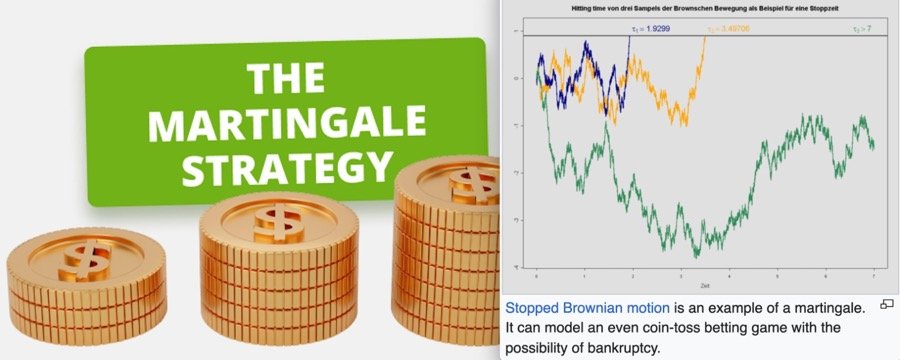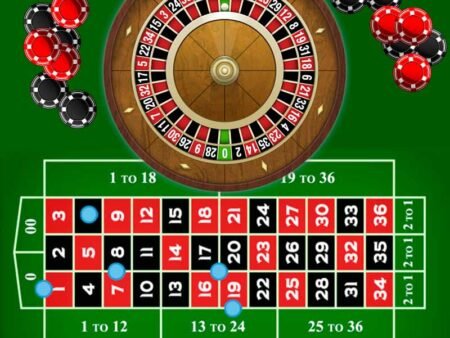Roulette Systems
Martingale
In the Martingale each bet is doubled after a loss, and you go back to your starting bet after every win. You will win one unit for every win, as long as you have enough money and do not get to the house limit. Once you reach the house limit, then you will lose the house percentage because there is no place else to go.

There are many variations of Martingale, and it can be used with other methods. For example, you can use a three-stage Martingale of 10-20-40 combined with betting that the decision before the last one will repeat…. or bet that the FIRST shooter (only) will throw a pass (or don’t pass). In this latter one you are betting only one bet on each shooter.
Some people add one or more units to each of the doubled bets. Others will change to a parlay after a certain point (let the first bet “ride” on the second bet after a win) and bet the amount that it takes to win what you want to win. Another variation would be to split it up and then win it back one part at a time…. there are many variations of Martingale with which people swear they are winning
D’Alenbert
In this method, bets are raised one unit after each losing bet and lowered one unit after each winning bet. In this way your winning bets are always higher than your losing bets. The sequences can also be higher, such as 1 2 3 4 7 11, etc.
Labouchere
This is also called “Split Martingale” or “Cross-Out” or “Cancellation” or several other names.
In its simplest form, you write down some numbers… let’s say 1 2 3. Each bet is the first and last of these numbers. In this example, it is 1 and 3, which equals 4. If you win you cross the two number off and bet the next two that are on the outside. In this instance there would be only the single two unit bet. If that wins you complete the series and win a total of all of the numbers (six here). If the bet loses, then you add that one number to the end of the series. So, the first bet would be 4 and it loses, so you add 4. That makes the next bet 1 plus 4, which is 5. And so on….
This means that you need to win only 1/3 of the bets PLUS two more and you will complete the series and win the amount that is in the series. Since you normally will win ALMOST half of your bets, that means that you MUST win… or must you??
I have also seen this done with many variations. One would be to use different numbers, such as lots of ones in the beginning, to keep the series from growing so fast. So, the series would be something like 1 1 1 2 2 3. When you complete the series you will win 10 units. The first bet is still four. You must win 1/3 plus 3.
Other people have devised ways of splitting it up when the bet gets too high. Set it aside and win one series and then go back and finish the second series.
There is a “Reverse Labouchere” for the brave at heart. You add the amount of the win to the end, and cancel the 2 outside numbers each time that you lose. The bet is the sum of these two outside numbers. This gives you many very small losses in return for an occasional very large casino win.
Parlay
A parlay is very simple. You just “let it ride.” Make a bet, and then leave the winnings there to ride on the next bet.
This does not have to be the whole amount. There is a method around called “31” where you have a series which is 1 1 1 2 2 4 4 8 8 (for a total of 31 units). Your first bet is one unit. This could be any bet from a dollar to 1/16 of the table limit. It is 1/16 and not 1/8 because you must parlay the 8 units. If that bet wins, you bet the same amount again. If it loses you go up the series with a parlay on each bet. Notice that if you win any of the parlays you will be winning anyplace from one to nine units
Pivot
Spend some time at a roulette table prior to commencing play and write down the winning number of each spin until one number repeats. The repeat number is your “pivot number” and therefore the number on which you place your first bet.
Example: 12 23 33 36 29 7 8 12 4
Number 12 is the first repeat number and therefore the “pivot number”. Number 12 will remain the “pivot number” for the next 36 spins in a row unless it wins.
Bet the same amount on your pivot number for each spin until you either win or lose at the end of the thirty-sixth spin. A win on a single number in roulette will pay 35/1









![Random Number Generator [1 to 6]](https://roulette-roulette.net/wp-content/uploads/2023/12/PHOTO-2023-12-20-18-40-14-2-100x100.jpg)




